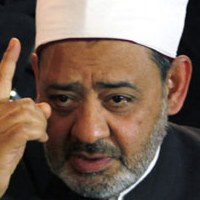![]()
Fri, Dec 03, 2010 | The Rubin Report | By Barry Rubin
Israel’s Missile Defense: The New Strategic Factor In The Middle East
A factor up until now neglected in the Middle East strategic picture is Israel’s development of a strong, multi-level missile defense system aimed both against short-range rockets fired by Hamas and Hizballah as well as to guard against a future Iranian nuclear long-range threat.
Many, unconsciously perhaps thinking of the U.S.-Soviet Cold War balance, misunderstand this system’s effectiveness. Of course, they point out, even if one nuclear missile gets through that would still be catastrophic. But this neglects three factors.
First, the Soviets had many hundreds of nuclear-tipped missiles and could launch dozens at the same time. Iran is unlikely to have more than s small number and will be unable to fire off more than an even smaller number at one time. This improves greatly the chance of a successful defense.
Second, missile defenses have greatly improved since the Cold War era. The diversity of protective systems has grown in a spectacular manner.
Third, Israel must ensure—and know that Iran understands this—that its planes can take off and hit back the attacking country with nuclear weapons of its own. Israeli experts calculate that to have a chance of stopping such an Israeli second strike, Iran would have to fire a dozen missiles simultaneously.
Certainly, it is possible that Iran’s regime (or a faction there that might fire missiles without full government approval) would ignore the rational fear of being devastated in return. Yet by maximizing this certainty, the possibility of the Iranian regime ignoring the danger is minimized.
Israel expects the systems to be fully deployed by 2015—about the time Iran is likely to get deliverable nuclear weapons—but parts of it will be on-line well before that date. Details of the plan were just released by the Israeli government.
Oh, by the way, this is a story breaking right now, in November 2010. But if you’ve been reading Rubin Reports you would have known about it in September 2009.
There is one seemingly big negative aspect to the evolving situation, though it is not as bad as it seems. Iran has developed ways to upgrade guidance systems (it is actually pretty easy given contemporary technology) which means that Hamas and Hizballah rockets are likely to become more accurate. However, it is easier to shoot down a missile, which follows a predictable course, than an erratic rocket. Israel’s defense system is adjusting for this factor.
The systems involved in Israel’s multi-level defense include:
— Iron Dome, against short-range rockets (3 to 45 miles) of the type used by Hamas and Hizballah.
— David’s Sling, against longer-range rockets, like the ones Hizballah has, will be ready by 2013. A war with Hizballah, which is too busy consolidating its hold over Lebanon, is unlikely before that.
— The Arrow, which is already available and is designed to shoot down Iranian missiles at high altitudes. The Arrow III upgrade can fire missiles even higher and further away, well outside Israel’s borders, is set to be ready in 2014 or 2015.
— Additional help could be obtained from U.S. missile defenses that are being set up near the Persian Gulf, also to protect Arabic-speaking countries from Iran.
— The overarching defense is Israel’s air force, which can hit targets in Iran, as well as in Lebanon, Syria, and the Gaza Strip.
That’s an impressive achievement for a little country of only seven million people.
As I’ve previously pointed out, Israel is unlikely to attack Iran to stop it from getting nuclear weapons. The lack of international support and the difficulty of launching such a mission without an imminent threat, among other factors, inhibit such an operation.
But Israel won’t hesitate to attack Iran if there is a real threat that the regime will launch missiles against Israel. You can bet on that.
About the author,
Barry Rubin is director of the Global Research in International Affairs (GLORIA) Center and editor of the Middle East Review of International Affairs (MERIA) Journal. His latest books are The Israel-Arab Reader (seventh edition), The Long War for Freedom: The Arab Struggle for Democracy in the Middle East (Wiley), and The Truth About Syria (Palgrave-Macmillan). For the website of the GLORIA Center go here and for his blog, Rubin Reports, go here.



 RSS
RSS











Israel's Missile Defense: The New Strategic Factor In The Middle East | #Israel #Iran http://j.mp/hP1Z04
Israel's Missile Defense: The New Strategic Factor In The Middle …: Iran has developed ways to upgrad… http://bit.ly/hpoQqt #asematy
RT @CrethiPlethi: Israel's Missile Defense: The New Strategic Factor In The Middle East | #Israel #Iran http://j.mp/hP1Z04
http://www.youtube.com/watch?v=ytWmPqY8TE0&feature=player_embedded